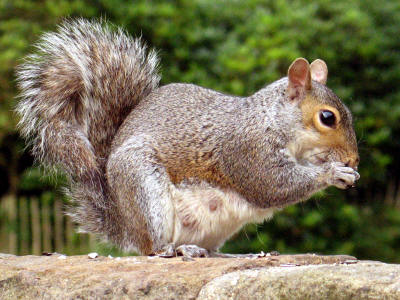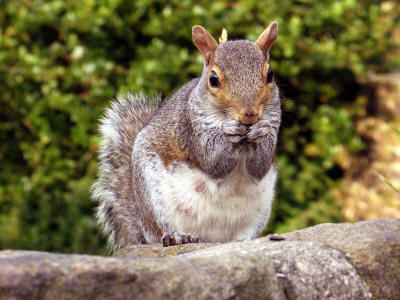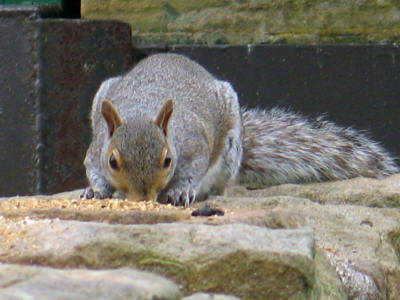Back To

Size:
Body approximately 25cms. The tail is around 20cms.
Distribution: can be found throughout most of southern England (except the Isle of Wight), Wales, Some parts of Scotland and Northern Ireland.
Months seen:
All year.
Habita / Ecology
Woodland, parks and gardens.
Food: Eats mostly nuts and seeds. The front teeth of the grey squirrel are continually growing, and to prevent them getting too long, they need to constantly nibble on something to grind them down.
Features:
The grey squirrel is a native of north-east America. Its range there stretches from Quebec down through New Jersey and Pennsylvania.
It was first recorded in Britain in the 1820s, but they were not released into the wild until 1876
During the autumn months you might see squirrels burying nuts and acorns. They do this to provide for the winter months when food is more scarce. They can usually find the buried food again by using their strong sense of smell.
Some of the more destructive habits of the grey squirrel is t bark chewing young trees to get to the fleshy green wood underneath. This can sometimes kill the tree, and explains why grey squirrels are not always popular with foresters.
Breeding season starts January and finishes around June. This is when they are at their most obvious. If you walk through a wood at this time of year you can often see the males chasing the females in the tree tops, and hear their screeching calls.
They have one or two litters a year, each producing between one and seven young. The squirrels home, known as a drey, is built in a tree from twigs and dry leaves. In the summer months the drey looks like a leafy platform, while in the winter months it is deeper, about the size of a football, and acts as a nursery for the young.
The grey squirrel frequently has patches of reddish-brown coloured fur, and we often get asked if this is the product of cross breeding with red squirrels. It isn't. In fact grey squirrels are more often half grey and half brown. To add further confusion there are also some colonies of black squirrels, and we've also received one sighting of a white grey squirrel in Kent.



